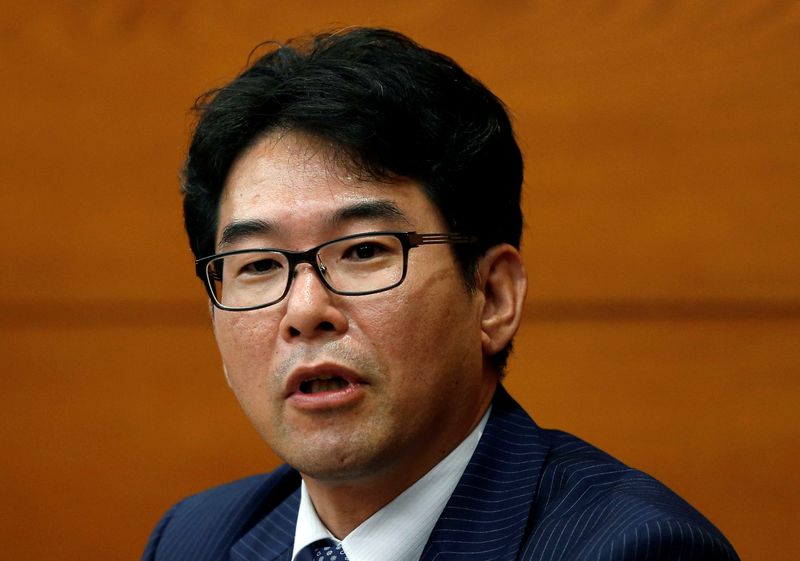By Leika Kihara and Takahiko Wada
TOKYO (Reuters) – The Bank of Japan (BOJ) will likely maintain its massive stimulus even as inflation is seen reaching 3% in coming months, to ensure domestic demand strengthens enough to offset a hit from slowing global growth, former BOJ board member Goushi Kataoka told Reuters.
With inflationary pressure rising, however, the chance of the BOJ ramping up stimulus to counter global headwinds was slim, said Kataoka, who was a vocal advocate of aggressive easing during his stint at the central bank, which ended in July.
“Unless economic conditions deteriorate sharply, I don’t think the idea of additional easing will be discussed much,” he said in an interview on Tuesday, adding that fiscal policy would play a major role in coping with the next economic slump.
Rising global commodity prices were heightening cost-push pressure in Japan to a level unseen in the past, he said. That was forcing companies to raise prices and was increasing the chance that inflation might stay above the BOJ’s 2% target for some time.
But Governor Haruhiko Kuroda would likely keep monetary policy ultra-loose for the remainder of his term, ending in April 2023, he said, adding that such a policy was appropriate, given Japan’s weak consumption and the looming risk of a global economic slowdown.
“Headline inflation may reach 3% but the rise will be driven mostly by higher raw material prices,” with few signs that inflation expectations are moving closer to the BOJ’s 2% target, he said.
“It would be a terrible idea for the BOJ to raise interest rates just because inflation briefly hits 3%,” said Kataoka, who is currently chief economist at PwC Consulting in Tokyo.
After years of huge asset buying failed to push inflation to its 2% target, the BOJ shifted to yield curve control (YCC) in 2016. Under that policy, the BOJ guides short-term interest rates at -0.1% and the 10-year bond yield around 0%.
The BOJ has held off on additional easing since 2016, and conducted a review of its framework in 2021 to make its policy more sustainable. Critics have argued that the radical stimulus cannot continue forever, because it imposes mounting costs, such as damaging bank profits with ultra-low interest rates.
Kataoka, who was a lone proponent of additional easing during his five-year tenure at the board, said global inflation now gave the BOJ a perfect reason to maintain YCC.
Keeping interest rates low in Japan, while other central banks hiked rates, would weaken the yen, boost exporters’ profits and push up inflation through rising import costs.
“Real interest rates are falling, giving capital expenditure a boost. If yen falls persist next year and beyond, that could also change corporate behaviour, including drawing investment back to Japan,” Kataoka said. “All of this is exactly what YCC is aiming for.”
Japan’s economy has only recently begun recovering from the pandemic’s scars, with curbs on activity being lifted.
Kataoka said that in September the BOJ would likely end on schedule a pandemic-relief funding scheme, since corporate funding strains were easing, though the government should offer necessary support to prevent bankruptcy cases from rising.
“Considering conditions regarding the pandemic, the role of this programme has come to an end,” he said.
Japan’s headline consumer price measure in July was 2.6% higher than a year earlier. The core consumer price index (CPI), which excludes volatile fresh food but includes fuel, was up 2.4%, driven mostly by rising raw material costs.
Kuroda has repeatedly said the BOJ has no intention to withdraw stimulus unless rising inflation is accompanied by higher wage growth and stronger domestic demand.
(Reporting by Leika Kihara and Takahiko Wada; Editing by Bradley Perrett)
